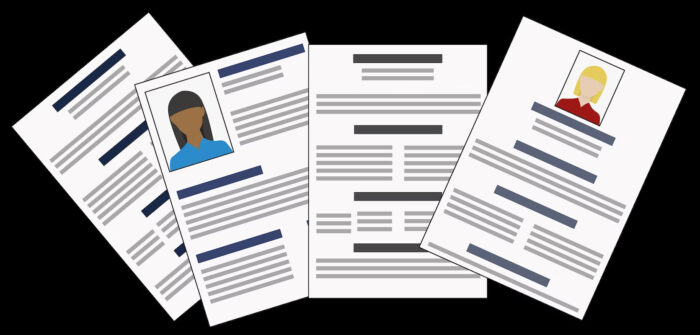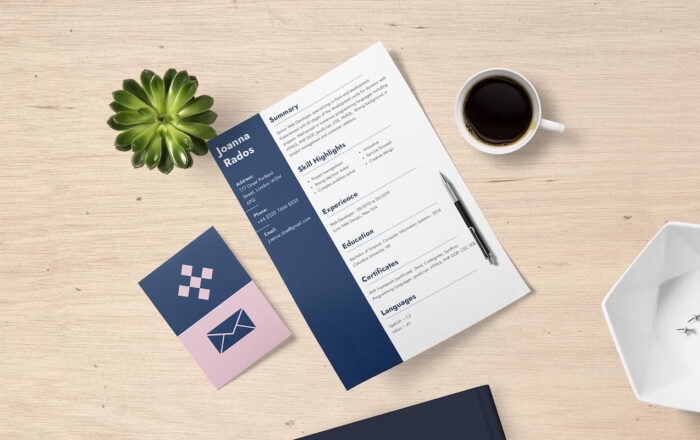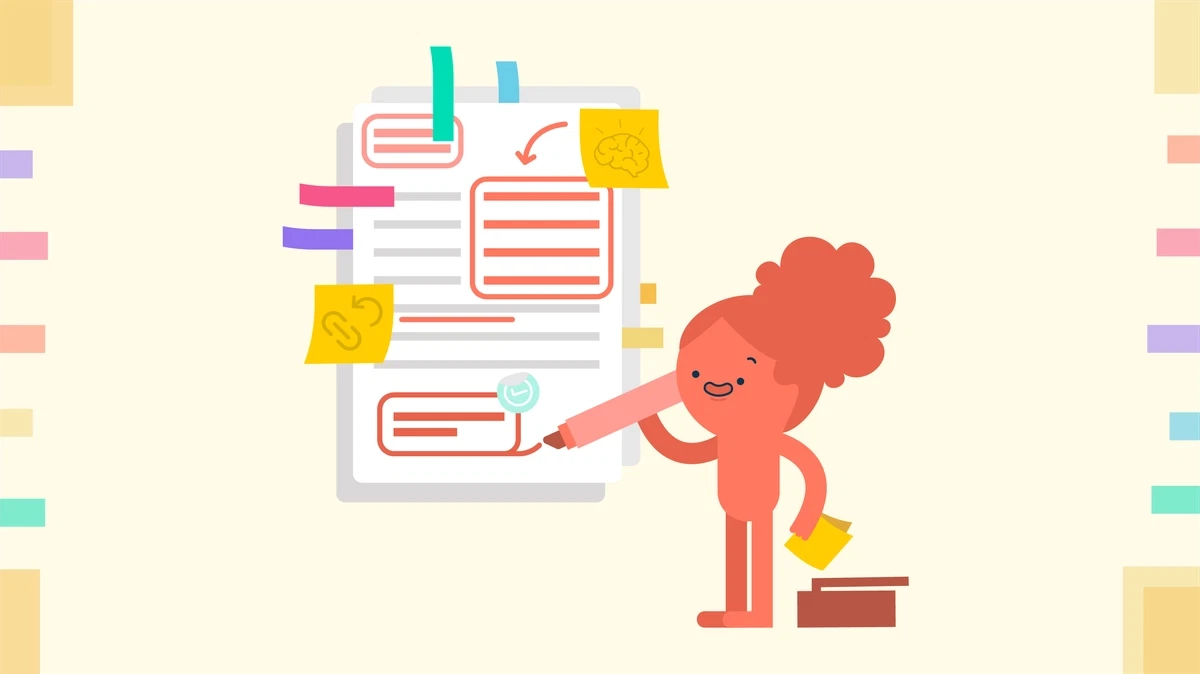CV Photo – Should It Stay or Should It Go?
Every now and then, you realise that university is drawing to an end much faster than you may have thought. More frightful yet, as you’re cramming for your final exam, you may also realise that there is always a bigger fish to fry, i.e. the job market. You may have skillfully crafted your CV and accounted for your education and possible work gaps, but there is just one more thing: your CV photo.
There is much debate nowadays about whether you should include your CV photo in your job applications. Is it more or less likely to land you an interview? The fact is that people have been turned down based on racial discrimination or even stupid appearance-based arguments. I mean, racism is simply unforgivable, but getting all fussy about tattoos is ludicrous.
I’m not gonna lie; people form impressions about others based on appearance and a complex interplay of socially constructed deep-seated beliefs and the notoriously human tendency to put people into boxes. Which often doesn’t work. It can’t work because putting people into boxes is like trying to cram an oyster shell into a parking meter. Unsavoury though it is, there wouldn’t be such a thing as an implicit association test if we, as a rather peculiar species, didn’t do this.
By including your photo in your CV, you’re openly inviting your potential employer to pass judgement on you based on all those beliefs and opinions. So, the answer is actually no; you should not include your photo in your application. And the great news is that most English-speaking countries don’t want to see your photo in your CV, as they are bias-conscious.
If only things were that simple.
CV Photo Guidelines – Whenever, Wherever It’s Necessary
If you’re able to send an application without a photo, more power to you, but as you peruse various job advertisements, you may find that some companies insist on seeing your face before actually seeing your face. On the other hand, if you’re applying for a position abroad, chances are that you’ll be asked to include a snap of your face. What then? Just pass the opportunity up, or go for it?
Sure, there is one argument kinda, sorta in favour of including a picture – HR managers tend to be drawn to photos. If done professionally, it can be a good career move (again, if and ONLY if it is specified in the job posting).
If you need to include a photo in your CV, follow these golden rules:
- The photo should show your head and shoulders.
- The lighting should be bright enough to make your face fully visible.
- Look at the camera and don’t cover your face.
- A hint of a smile is OK and even encouraged, but don’t pull a Joker on your potential employer.
Ideally, you will have your photo taken by a professional (e.g. any good photo shop will have an affordable option). If you’re having someone take a photo of you at home, make sure that the distance between the camera and your face is about 40 centimetres for the best effect.

What to Wear for a CV Photo? Apple-Bottom Jeans and Boots with the Fur?
In addition to smiling, but not too much, the fact that your shoulders are visible (but also not too much of them either) begets a question: What should you wear for this? The real answer is tricky: you should wear clothes that are your style but made professional.
If you’re down for corporate fashion and you already have a series of combos you wear to interviews, you should wear these. On the other hand, if the very word corporate gives you the creeps and you feel like yourself in casual attire, your CV photo should reflect that to a degree. I must admit, I am a fan of the ‘business-casual’ style, even though my line of work has no dress code whatsoever (so, if I do show up in flip-flops at work, the worst that can happen is that someone has the same pair), and my CV photo shows that. Shirts (do fix your collar, it’s just shabby otherwise), a sweater, blazers, vests – all of these will be perfectly fine for a CV picture.
However, if you are a fan of crop-tops, revealing or curve-hugging clothes, deep V-cuts, bikinis, or inverse Donald Duck style, I have some bad news for you – you’ll have to level up your professional look for a decent photo. Wait until you’ve got the job and gained some sense of what kind of dress-code culture your workplace nurtures.
When I See Your Face, There’s a CV Photo Background I Would Change
When you take a CV photo in a professional shop, the background doesn’t even cross your mind, does it? But, if you’re organising your photo shoot at home, suddenly you’ll realise just how much stuff you have lying around, hanging from the walls, plastered on doors, or even swinging from the ceiling. And goodness me, that’s great; houses are meant to have some life in them – leave the surgical minimalism for the operating theatre.
However, your CV photo should still not catch a whiff of your two cats having a go at one another to establish dominance on the cat tree (and we all know that the parrot is the actual ruler anyway).
If you’re taking a photo at home, make sure to stand in front of a neutral, light background. An empty part of the wall is ideal (PS, it can be at any height, nobody will know you’re sitting, kneeling, or crouching for the photo 😉), especially if you have a good, frontal source of light. You may even consider putting up a big square of white paper behind you for the occasion.
Speaking of colours and lights, white is not an absolute must, as long as your photo is not maimed by a screaming garish pink poster of your teen crush. Bland colours (cream, grey, light blue) also work. If you’re leaning towards darker shades, make sure to take your picture when you have natural light.
Do I Wanna Know – CV Photo Size and Details?
Once you’ve taken several photos (seriously, never take only one if you’re doing it at home), you have to edit them a little bit before plastering one onto your CV. By editing, I don’t mean becoming a Photoshop Jedi and somehow magicking away every imperfection; I mean adjusting the brightness and contrast slightly or giving it just a twinge of colouration/sharpness.
Your photo should be cut into an upright rectangle and placed somewhere in the corner of your CV, in line with your personal information (name, birthdate, contact info). The question of size often arises, and the best solution is somewhere between 2–3cm. You can adjust the size according to the CV template you’re using, but the rule of thumb is that your photo should not be getting in the way. Your personal information, education and work background, and relevant experiences always take priority in a CV – the photo has to do its best to squeeze in.

Stop Calling, Stop Calling, I Don’t Wanna a CV Photo from a Cell Phone
One last thing that you may be wondering about is whether you can or should take your CV photo with your cell phone. The answer is yes and no (see, German has a great word for this, it’s Jein, Ja+Nein). You can take a picture with your cell phone in the circumstances listed above (good lighting, bland background, some post-production editing). God knows cell phone cameras have advanced enough to take halfway decent photos.
What you shouldn’t do is take a selfie. It’s quite difficult to strike a professional, relatively comfortable-looking pose with a neutral face if you’re trying to navigate your selfie-camera angle. Instead, ask a friend to do it for you; it only takes ten seconds, and it makes a much better impression on the application.
CV Photo – Tips and Tricks to Remember
Including a photo in your CV is an optional affair, but when you do have to include it, you should do it properly and professionally. Here are the most important tips:
- Your photo should show your head and shoulders.
- The background should be bland.
- Smile slightly, but don’t grin too much.
- Go for frontal, natural lighting.
- Wear relatively professional clothes.
Now that is done, you’ve got a much bigger matter to attend to, namely preparing for the tough interview questions!
A CV (or résumé) photo should be professional-looking. It should show your face and shoulders, be in front of a neutral background, and ideally be taken in neutral light. You can smile, but make sure to look into the camera properly.
For a job application, you should use a photo specifically designed for this purpose (no old Facebook pictures). Use a photo that shows your entire face (evenly lit) and where you’re looking directly into the camera (a bit of a smile is OK). The background should be neutral.
For a professional headshot, you should wear clothes that are professional looking. Corporate attire or business casual style are the best choices for a good CV (or résumé) photo.
How we ensure our content is accurate and trustworthy?
At StudySmarter, we have created a learning platform that serves millions of students. Meet the people who work hard to deliver fact based content as well as making sure it is verified.

Gabriel Freitas is an AI Engineer with a solid experience in software development, machine learning algorithms, and generative AI, including large language models’ (LLMs) applications. Graduated in Electrical Engineering at the University of São Paulo, he is currently pursuing an MSc in Computer Engineering at the University of Campinas, specializing in machine learning topics. Gabriel has a strong background in software engineering and has worked on projects involving computer vision, embedded AI, and LLM applications.
Get to know Gabriel




